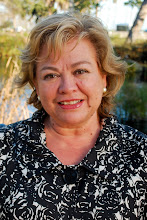By Silvia Uribe
|
This topic hits home in more than one way: a) Because one of my daughters was in GATE throughout her student life; b) Because it is obvious that this controversy is fueled by assumptions and stereotypes, and; c) Because it saddens me to hear so much anger in the remarks of those who oppose the restructure.
Such angry reactions are generally caused by fear. In this case, the fear of lower standards being set for intelligent, dedicated, responsible students. Of course, no one would want that. Now, please notice that I didn't say, "gifted". It was not an omission. Actually, that's the first point in my attempt to put things in perspective.
I don't think that those who participate in GATE courses are any more gifted than many who don't. As much as I was, and am, proud of my children, I know none of them are geniuses, the same way that none of their classmates were during all those years.
However, as much as I don't want anyone to lower the standards for our intelligent, dedicated, responsible students - and this is my second point - I also realize this kind of student comes in every color, size and shape. Actually, I never understood why, in my daughter's GATE classrooms, there were only 2-3 students of color, including her (sadly, Latinos/as make up about half of the district's population, but just 18% of GATE students).
The only answer to this is the great disparity in opportunities for students of color. We all know in our community and elsewhere, Latinos and other people of color who are successful in many fields; entrepreneurs, scientists, engineers, astronauts, writers, actors, singers, media personalities, politicians - you get the point. We also know that all groups have their share of obnoxious, stupid, irresponsible people. It is silly to generalize, and think that individuals of a particular group cannot achieve greatness, at the level others do.
Notwithstanding this, an overwhelming majority of students of color are not recommended for GATE, and for one reason or another, many are sent to special education. Interestingly enough, the percentage of the general population who test into "Gifted and Talented Education" (GATE) is 4-5%, but in most SBSD secondary schools, the percentage of white students in GATE classes is 4-8 times higher than that.
We assume that these children passed a GATE test to get into GATE classes, but in reality, 30% of students in the GATE classes never passed the test; they are there because of parental advocacy. Once students are either sent to GATE or to Special Education classes, they are rarely moved out, regardless of their achievement.
It is clear that with this restructure, the School District's administrators and Board members are not thinking about lowering bars, simply because there's no need to do such a thing. They are trying to provide access across the board for those who can, and will, take advantage of a more rigorous curriculum that will prepare them for college.
They will accomplish this by creating consistent criteria to get into advanced classes, including grades, standardized test scores, teacher recommendations, as well as the GATE test. With this restructure, teachers would receive more training to become even more skilled in teaching an advanced curriculum, including becoming certified to teach GATE students - this is a benefit to current GATE students. Frankly, it seems to me like a win-win situation.
My third point is this: As a country, state, or city, do we really think that it is in our best interest not to give our students of color the same opportunities other students have? We‘d be talking about millions of people falling behind. Can we afford to have that many poorly educated people? That's what happens in third world countries, and that's part of why they are third world countries. The more highly academically educated people of all colors we have, the better off we will be.
And here's my final point: Colleges and universities do not recognize GATE as more advanced courses than Honors, and do not count the weighted grades received by GATE students, which shockingly, when applying to those institutions, makes the students' official GPA drop, because the weighting from GATE classes is removed.
Really, there's no point in keeping the GATE designation alive, and there are many practical reasons for changing it to Honors, and for establishing general criteria.
Silvia Uribe is a freelance writer with a Latina perspective.
Cross-posted at edhat.com






